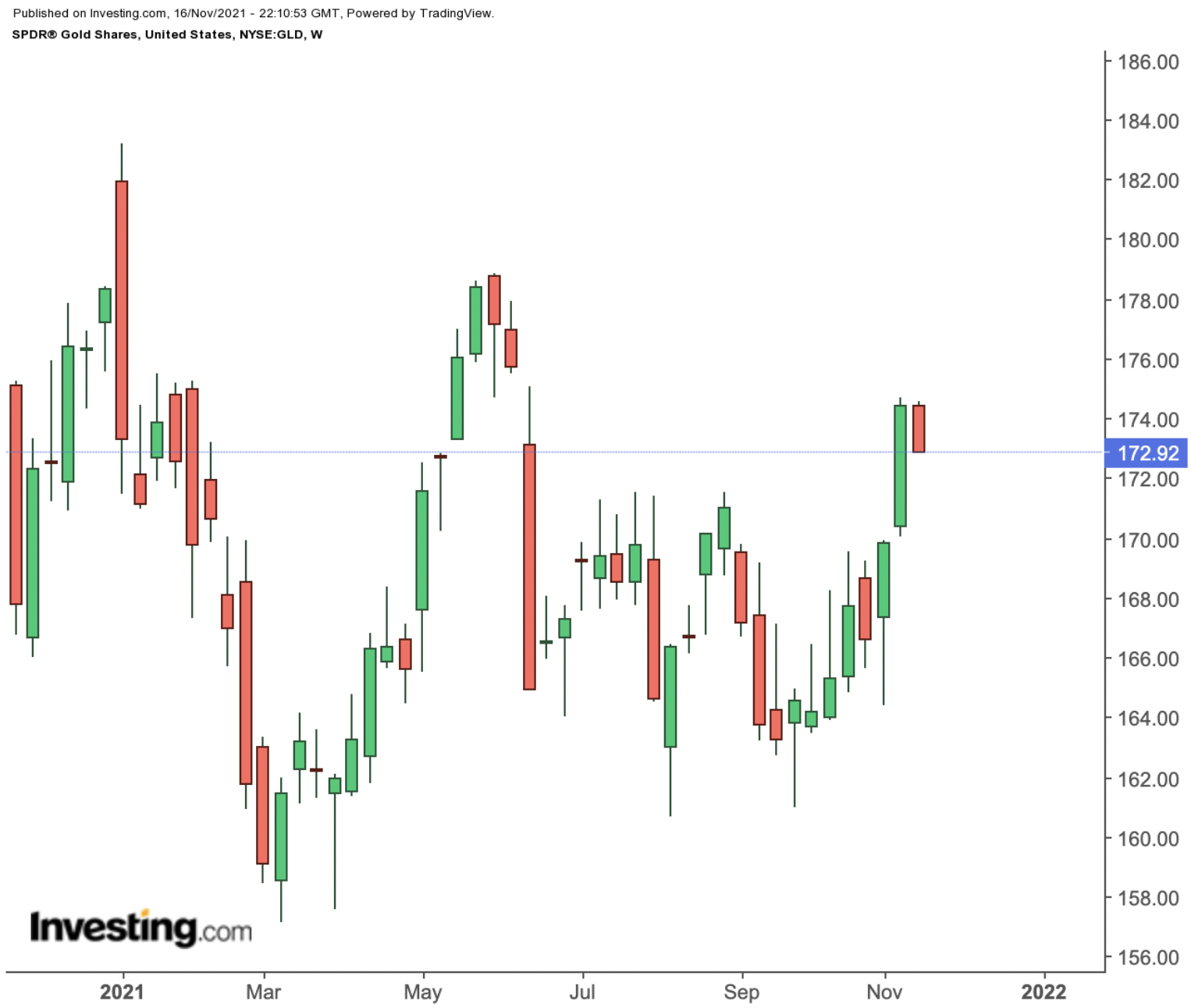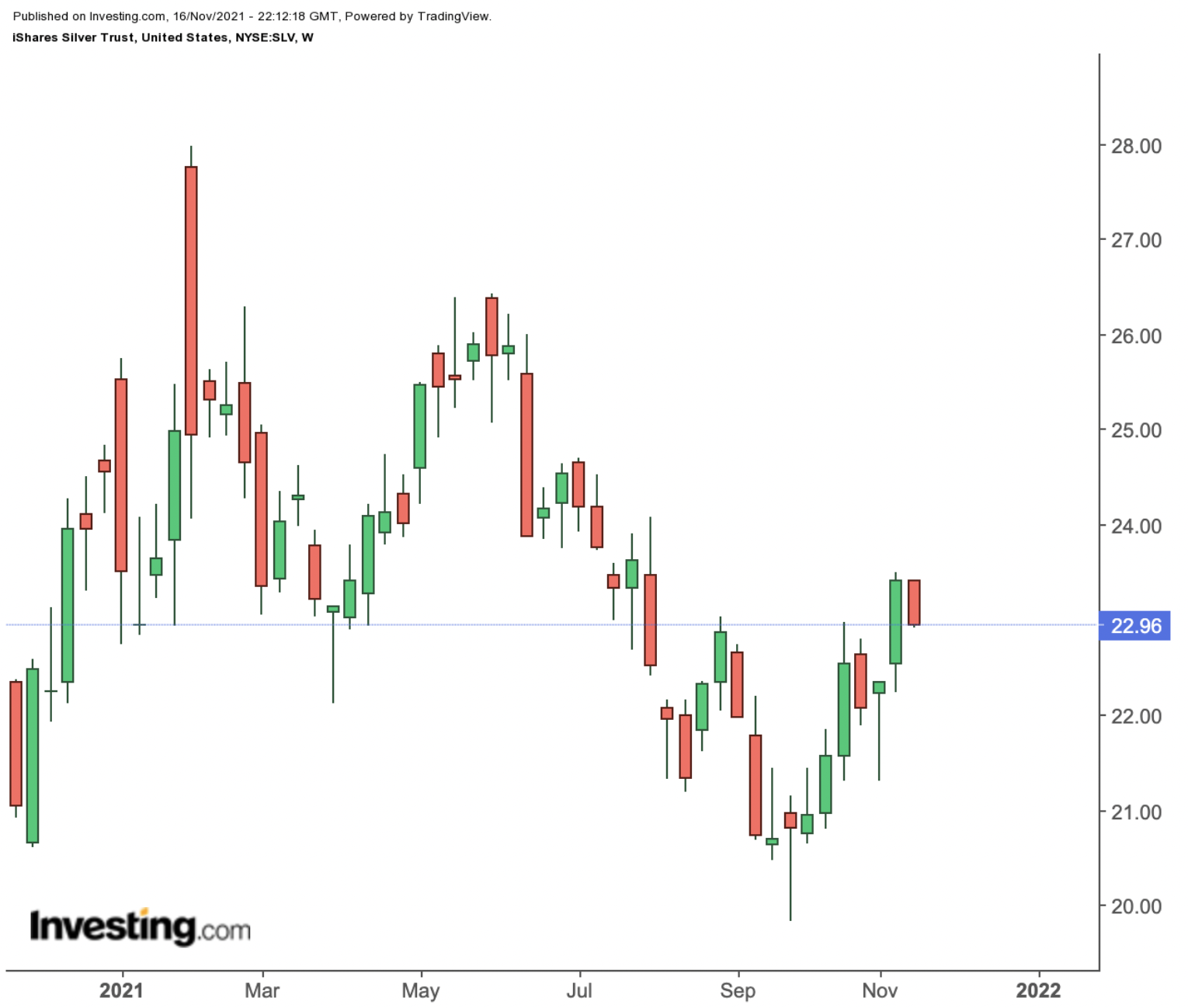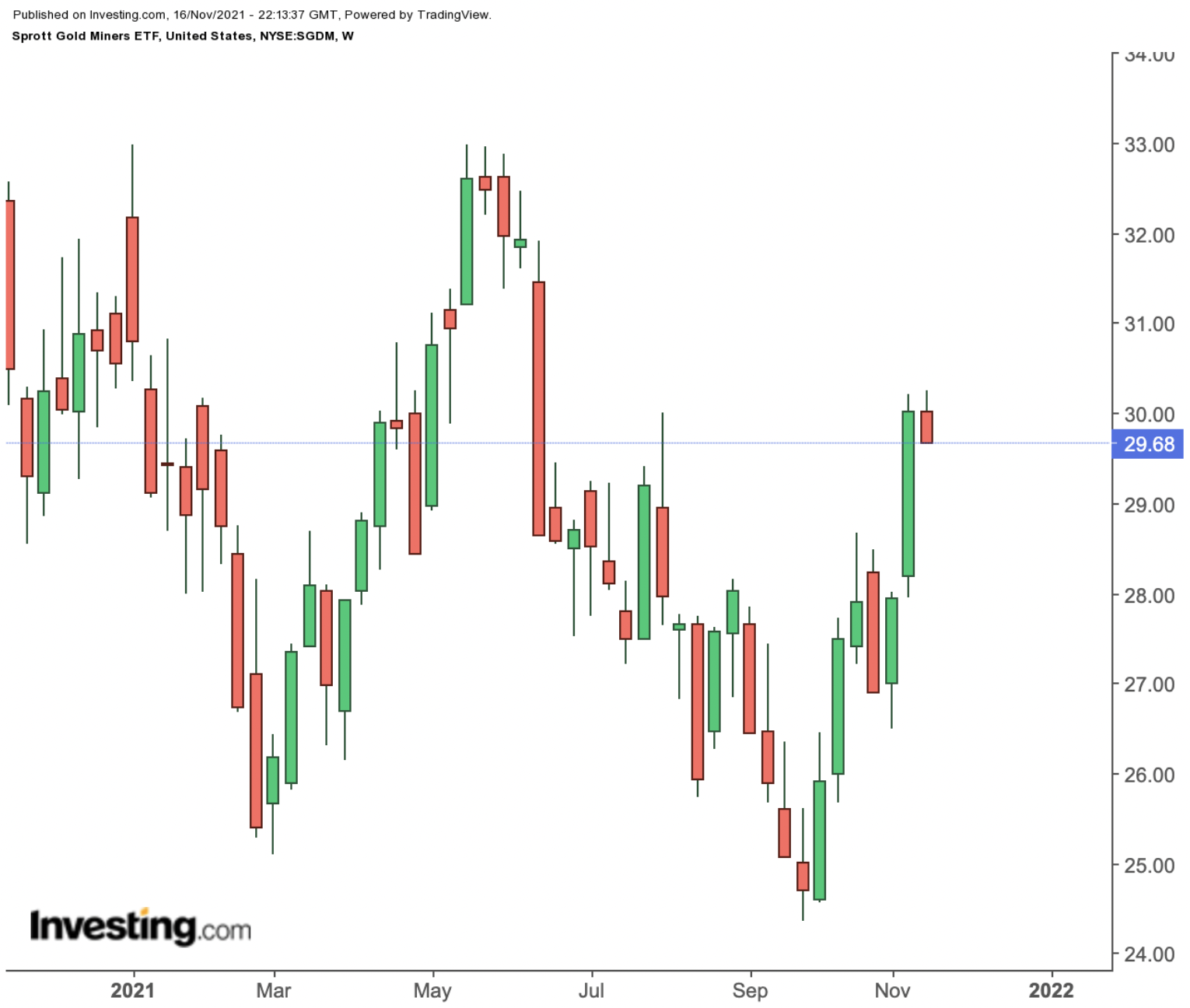So far, 2021 has not been a good year for either gold or silver bulls. Year-to-date, both precious metals are down about 2.5% and 5.5%, respectively.
Meanwhile, according to the October Consumer Price Index (CPI) released by the US Bureau of Labor Statistics, consumer prices are surging. The CPI increased by 6.2% year-over-year, the most in over three decades. And it was up 0.9% on a monthly basis.
Concern over rising inflation levels has put precious metals in the limelight as prices have edged higher in recent weeks. Depending on personal investment objectives, most financial planners typically recommend a 5% to 10% portfolio allocation in precious metals, which could act as inflation hedges.
There are different ways to invest in silver and gold, starting with buying the physical metal. Today, we introduce three exchange-traded funds (ETFs) that could appeal to readers who believe there could be further glitter in gold or silver.
1. SPDR Gold Shares
- Current Price: $172.92
- 52-Week Range: $157.13 - $183.21
- Expense Ratio: 0.40% per year
SPDR® Gold Shares (NYSE:GLD) tracks the price of gold bullion. Global market forces determine the price of spot gold over-the-counter (OTC) 24 hours a day. The majority of demand for gold comes from investment and jewelry-making purposes. As we write, the yellow metal hovers at $1,867 per ounce.

The fund started trading in November 2004 and net assets stand at $58.4 billion. In fact, GLD is the largest physically backed gold ETF in the world.
Year-to-date, the ETF is down 2.4%. However, in the past month, it is up about 5%. The $180 level is likely to act as resistance in the coming days. In the case of short-term profit-taking, interested readers could consider investing around $170. We expect gold bulls will continue to have the upper hand in 2022, and $190 may well be the next target.
A side note: SPDR Gold MiniShares (NYSE:GLDM) is another similar ETF buy with a lower expense rate of 0.18% per year.
2. iShares Silver Trust
- Current Price: $22.96
- 52-Week Range: $19.83 - $27.98
- Expense Ratio: 0.40% per year
iShares Silver Trust (NYSE:SLV) might appeal to investors looking to invest in silver through their brokerage accounts as opposed to buying the physical metal.
SLV provides exposure to the daily movement in the price of silver bullion. As reference, it uses the London Bullion Market Association (LBMA) silver price. Most of the global trade in bullion is based in London.

The fund started trading in April 2006, and net assets stand at $13.8 billion. So far in 2021, SLV is down about 5.4%. However, in the past month, the fund returned more than 7.5%.
Silver, like gold, is regarded as an asset to hold for investment purposes. In addition, around half of the annual demand for silver comes from industrial applications, in part due to its high levels of thermal and electrical conductivity.
In other words, economic activity and growth can easily influence the price of silver, which tends to be volatile. Buy-and-hold investors could regard the $22.5 level as a better entry point.
3. Sprott Gold Miners ETF
- Current Price: $29.68
- 52-Week Range: $24.35 - $32.99
- Dividend Yield: 0.31%
- Expense Ratio: 0.50%
This fund focuses on miners. Understandably, a rising tide typically lifts shares of most businesses in an industry. Therefore, those readers who believe gold might climb further could consider buying into gold miners through an ETF.
The Sprott Gold Miners ETF (NYSE:SGDM) invests mostly in large- and mid-capitalization gold miners. The fund started trading in July 2014.

SGDM, which has 35 holdings, tracks the returns of the Solactive Gold Miners Custom Factors Index. Canadian companies have a hefty 78.1% share in the fund, followed by miners based in the US (15.6%) and the UK (4.7%). Top 10 holdings comprise around 60% of net assets of $252 million.
Newmont Goldcorp (NYSE:NEM) and Franco-Nevada (NYSE:FNV) have the biggest slices with 9.72% and 9.17%, respectively. Next in line are Barrick Gold (NYSE:GOLD), Wheaton Precious Metals (NYSE:WPM) and Kirkland Lake Gold (NYSE:KL).
The fund is down by 1.6% this year, but returned more than 9.2% in the past month. Given the recent rapid run-up in price, short-term profit-taking is likely. A potential decline toward $28.5 would improve the margin of safety.
Finally, there are several other ETFs that give exposure to both gold and silver miners. Examples include:
